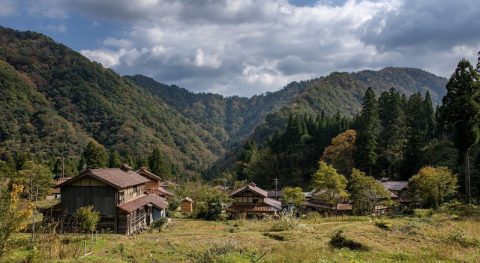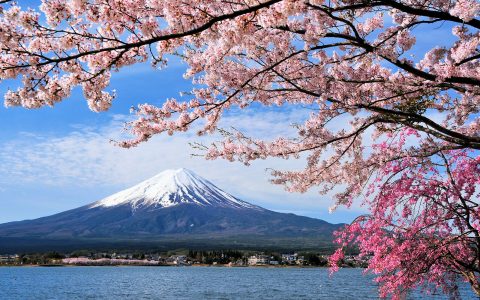A Brief Introduction to
Indian Wellness
 The widespread reach of India’s cultural influence has flourished since the ancient origins of the Indus River Valley civilization, which flourished way back in 2,500 B.C.E. Indian culture has spread from music to movies, from religion to politics, cuisine and history and even to language (for instance, the words ‘bangle’, ‘bungalow’ and ‘jungle’).
The widespread reach of India’s cultural influence has flourished since the ancient origins of the Indus River Valley civilization, which flourished way back in 2,500 B.C.E. Indian culture has spread from music to movies, from religion to politics, cuisine and history and even to language (for instance, the words ‘bangle’, ‘bungalow’ and ‘jungle’).
Think about the countless truth-seekers and spiritual questers who have made their pilgrimage to India, such as the Beatles’ study of transcendental meditation in 1968, and consider the exponential rise of wellness culture, including the widespread practice of yoga around the world today, which is arguably one of the most successful byproducts of globalization. Here’s a crash course on two of the most popular and influential wellness systems that India has exported to the world.
Here’s a (brief!) introduction to yoga and ayurveda, two systems, which you may encounter on your next trip to India—especially if you’re headed to the spa, or taking a yoga class in its country of origin. (As they say, ‘When in Romatpur…’)
Yoga
 Most of us have taken at least a class or two of yoga before; and if you haven’t, surely you know someone who is a regular practitioner. Here in the West, what most of us know as yoga is actually a subset of practices called hatha yoga, which largely focuses on physical exercises to master the body and mind.
Most of us have taken at least a class or two of yoga before; and if you haven’t, surely you know someone who is a regular practitioner. Here in the West, what most of us know as yoga is actually a subset of practices called hatha yoga, which largely focuses on physical exercises to master the body and mind.
In much broader terms, the word ‘yoga’ stems from the Sanskrit root, ‘yuj’, which means “to yoke, unite, join, or add”, and comprises an entire system of physical, mental, and spiritual disciplines much more extensive than what we might consider yoga.
 The first mention of the word ‘yoga’ came in between the 5th and 3rd century B.C.E., in the important scriptures known as the Upanishads. The practice of yoga is described here as the steady control of the senses, from gross to subtle.
The first mention of the word ‘yoga’ came in between the 5th and 3rd century B.C.E., in the important scriptures known as the Upanishads. The practice of yoga is described here as the steady control of the senses, from gross to subtle.
The ultimate goal of yoga is moksha (liberation), but the definition of this depends on various philosophical or theological beliefs.
Moksha, or liberation, could mean any or all of the following:
-freedom and release from suffering, in the aim of cultivating inner peace and ‘salvation’;
-a raising or expansion of consciousness as the ego dissolves and the practitioner comes to identify and coexist with everyone and everything;
-attaining enlightenment, gaining the ability to comprehend the impermanent (illusion/delusion) and the permanent (or transcendent).
 There are various branches of yoga, which, with the aim of achieving liberation, focus on various types of practices; here are a few of them:
There are various branches of yoga, which, with the aim of achieving liberation, focus on various types of practices; here are a few of them:
Jnana yoga: The word for ‘knowledge’ in Sanskrit, it emphasizes the path of knowledge or wisdom or the ‘path of self-realization’. This could entail studying with a guru, meditating and reflecting on the nature of the self and the mind. It is one of the spiritual paths in Hinduism.
Bhakti yoga: the yoga of devotion, where one is lovingly focused on a personal god, or directed towards one of the many Hindu gods or goddesses; another possible spiritual route in Hinduism.
Karma yoga: the selfless yoga of service and action; focusing on loving acts of kindness for the benefit or others, without being attached to the fruits of your labour. (For instance, feeding or caring for the poor, for that sake alone, and not for the praise one might get for doing it). It is another possible path for Hindus to achieve liberation.

Indulge in India
Discover the land of kings and camels, soaring mountains and once-in-a-lifetime-experiences on your own customized adventure to India.
Start Planning Ayurveda
Ayurveda
After a long day of hiking in foothills or exploring temples, chances are you may want to recover with a soothing massage or spa treatment. This is where the system of ayurveda, or “the science of life”, comes in.
Predating modern medicine, this all-encompassing and holistic system asks us to consider both the body and the mind. Ayurvedic practioners can also prescribe different foods to eat or avoid, or ideal environments to surround oneself with.
The philosophy of ayurveda posits that each person’s mind/body is comprised of different energies, or doshas. One dosha tends to dominate, and the others fluctuate in a lesser (or dormant) capacity. Here are the characteristics or qualities of each dosha:
Vata: ruled by the element of air and space, the general personality type of the Vata-ruled individual has an active intellect, may tend towards anxiousness, and also of absentmindedness. Their physical frame is slight. They are advised to eat warming, nourishing, fatty foods and avoid cold or raw foods.
Pitta: ruled by the element of fire, you can easily imagine a hot-headed person: aggressive, impatient, intelligent, sharp. They can be outspoken, short-tempered, and argumentative. A pitta constitution is advised to eat cooling, sweet, or bitter foods, avoiding sour, spicy, and hot foods.
![]() Kapha: ruled by the elements of earth and water, they have heavier bodies than others, and can have a tendency to retain watery substances like fluids. Their emotional nature is calm, patient, and steady; on the other end of this, they can be stubborn or resist change. The best foods for a kapha-type to eat include warm, lightly cooked meals, or raw fruits and vegetables. Foods to avoid include sweet, fatty, salty, and fried foods.
Kapha: ruled by the elements of earth and water, they have heavier bodies than others, and can have a tendency to retain watery substances like fluids. Their emotional nature is calm, patient, and steady; on the other end of this, they can be stubborn or resist change. The best foods for a kapha-type to eat include warm, lightly cooked meals, or raw fruits and vegetables. Foods to avoid include sweet, fatty, salty, and fried foods.
MORE FROM Asia-Pacific + India

Biking in Cambodia with B&R Expert Guide Fin
Cambodia
The Slow Fund: Rice Production with Ozuchi Village
Japan
Take a Virtual Ride on the Hai Van Pass in Vietnam
Vietnam
How Three Cambodian Hotels Are Joining Forces to Feed Their Communities
Cambodia
Meet Fin—B&R’s Expert Guide in Cambodia
Cambodia
An Insider’s Eye on Vietnam: What to See and What to Skip, According to our Vietnam Expert
Vietnam
Photo Essay: Exulting in Mongolia’s Eternal Blue Sky
Mongolia
The Best Times of Year to Travel to Asia
Vietnam
Chris Litt: On Mongolia and the Desire to Disconnect
Mongolia
Top 6 Multi-Day Walks in Australia
Australia
The 8 Best Restaurants in Auckland
New Zealand
The 5 Best Restaurants in Wellington
New Zealand
8 Reasons Why You Need to Take an Australian Adventure
Australia
Cultural Quirks About Bhutan That Will Blow Your Mind
Bhutan
5 Things to Know Before You Go to Japan
Japan
8 Favourite Restaurants to Eat in Queenstown
New Zealand
10 Must-Try Australian Wines
Australia
Where to Eat in Hong Kong: 7 Best Restaurants
China
A Kiwi’s Guide to Enjoying New Zealand
New Zealand

